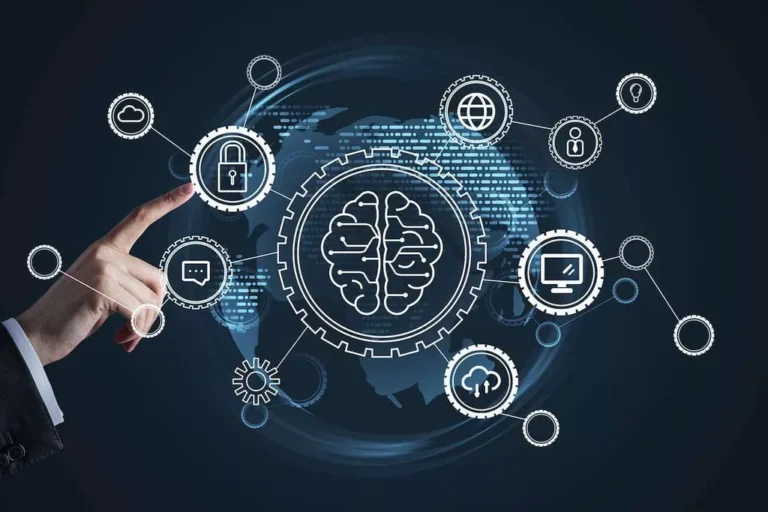A perceptron is an algorithm that can be taught to carry out types of rnn a binary classification task. A single perceptron can’t modify its personal construction, so they’re typically stacked collectively in layers, where one layer learns to recognize smaller and more particular options of the data set. In a typical artificial neural network, the forward projections are used to foretell the longer term, and the backward projections are used to evaluate the previous.
- However, the fixed-length context vector can be a bottleneck, especially for long enter sequences.
- Ever surprise how chatbots understand your questions or how apps like Siri and voice search can decipher your spoken requests?
- RNN stands for Recurrent Neural Network, this is a sort of synthetic neural community that can course of sequential knowledge, acknowledge patterns and predict the ultimate output.
- While Recurrent Neural Networks (RNNs) offer powerful instruments for time series predictions, they’ve certain limitations.
- RNNs have a reminiscence of past inputs, which allows them to seize details about the context of the input sequence.
What Are Recurrent Neural Networks (rnns)?
Forget fragmented workflows, annotation instruments, and Notebooks for constructing AI purposes. Encord Data Engine accelerates each step of taking your mannequin into production. Monitor, troubleshoot, and evaluate the information and labels impacting mannequin efficiency. Understand and handle your visual knowledge, prioritize data for labeling, and initiate lively learning pipelines.
Attention Mechanisms For More Correct Predictions
The major kinds of recurrent neural networks embody one-to-one, one-to-many, many-to-one and many-to-many architectures. Training and Backpropagation Through Time (BPTT) – During training, the network uses Backpropagation Through Time (BPTT) to adjust its weights primarily based on prediction errors across all time steps. This approach entails unrolling the network through time and making use of backpropagation to replace weights, enhancing its capacity to make correct predictions primarily based on the entire sequence of knowledge.
🤔 Why Rnns Matter And Their Shortcomings

Let me give you an instance where you’ll perceive you should observe the enter sequence to predict the output. But for primary feed forward networks, there’s a possibility to not have hidden layer(s). Prepare data and build models on any cloud using open supply frameworks corresponding to PyTorch, TensorFlow and scikit-learn, tools like Jupyter Notebook, JupyterLab and CLIs or languages similar to Python, R and Scala. The problematic issue of vanishing gradients is solved through LSTM as a end result of it keeps the gradients steep sufficient, which keeps the coaching relatively short and the accuracy high. The assigning of importance happens via weights, that are additionally realized by the algorithm. This merely implies that it learns over time what information is necessary and what’s not.
Now we have a state of the earlier enter as a substitute of the enter itself which helps us to maintain the sequence of the data. All the weights and biases of these hidden layers are completely different and for that clearly each layer behaves independently. So combining them collectively isn’t attainable and sustaining the sequence of the input information isn’t possible . For conventional machine studying, it’s virtually unimaginable to work with so many features and that is the place conventional machine learning fails and this neural network concept comes into the picture.
Recurrent Neural Networks (RNNs) are a category of artificial neural networks uniquely designed to deal with sequential information. At its core, an RNN is like having a reminiscence that captures information from what it has beforehand seen. This makes it exceptionally suited to duties the place the order and context of knowledge points are essential, similar to revenue forecasting or anomaly detection. RNN use has declined in artificial intelligence, especially in favor of architectures similar to transformer models, however RNNs usually are not out of date.
For the end of the story to make sense, your friend has to recollect necessary details from earlier components of the story. Your good friend could even have the ability to predict the tip of your story based on what you’ve told them up to now. An RNN works similar to this, remembering the data it has acquired and utilizing this info to understand and predict what’s coming next. Used by Google Analytics to gather information on the variety of times a person has visited the website as nicely as dates for the first and most recent go to. Used by Microsoft Clarity, Connects a quantity of web page views by a person right into a single Clarity session recording.
The completely different activation features, weights, and biases shall be standardized by the Recurrent Neural Network, making certain that every hidden layer has the identical traits. Rather than constructing numerous hidden layers, it will create just one and loop over it as many occasions as needed. ANNs encompass interconnected artificial neurons, nodes or models, organized into layers. Hybrid models successfully handle spatial and sequential patterns, leading to better domain predictions and insights. Advanced techniques like Seq-2-Seq, bidirectional, transformers and so on. make RNNs more adaptable, addressing real-world challenges and yielding comprehensive outcomes. This reality improves the stability of the algorithm, offering a unifying view of gradient calculation techniques for recurrent networks with local feedback.

It looks at the earlier state (ht-1) together with the present input xt and computes the function. LSTMs also have a chain-like structure, however the repeating module is a bit completely different construction. Instead of getting a single neural community layer, four interacting layers are speaking extraordinarily. These are just a few examples of the many variant RNN architectures that have been developed over time. The choice of structure is dependent upon the particular task and the characteristics of the enter and output sequences. The gradients carry info used in the RNN, and when the gradient turns into too small, the parameter updates become insignificant.
MLPs are used to supervise learning and for purposes similar to optical character recognition, speech recognition and machine translation. The other two types of courses of artificial neural networks embrace multilayer perceptrons (MLPs) and convolutional neural networks. In many real-world situations, time collection data may contain a quantity of related variables. You can lengthen RNNs to handle multi-variate time series by incorporating a quantity of enter options and predicting multiple output variables. This allows the model to leverage extra data to make extra accurate predictions and better seize complex relationships amongst totally different variables.
Gradient descent is a first-order iterative optimization algorithm for locating the minimal of a perform. This unit maintains a hidden state, basically a form of reminiscence, which is up to date at each time step primarily based on the present enter and the previous hidden state. This suggestions loop permits the community to learn from past inputs, and incorporate that data into its present processing.

Like feed-forward neural networks, RNNs can course of data from preliminary enter to final output. Unlike feed-forward neural networks, RNNs use suggestions loops, similar to backpropagation via time, all through the computational course of to loop data back into the network. This connects inputs and is what permits RNNs to course of sequential and temporal data.
It is prepared to ‘memorize’ elements of the inputs and use them to make accurate predictions. These networks are at the coronary heart of speech recognition, translation and extra. Bidirectional RNNs are designed to course of enter sequences in each forward and backward instructions. This permits the community to capture both past and future context, which may be useful for speech recognition and natural language processing tasks.
A bidirectional LSTM learns bidirectional dependencies between time steps of time-series or sequence information. These dependencies may be helpful if you want the community to study from the complete time collection at each time step. Another RNN variant that learns long term dependencies is the gated RNN. You can practice and work with bidirectional LSTMs and gated RNNs in MATLAB®. Combining the bidirectional structure with LSTMs, Bi-LSTMs course of knowledge in both instructions with two separate hidden layers, which are then fed forwards to the identical output layer. This architecture leverages the long-range dependency studying of LSTMs and the contextual insights from bidirectional processing.
The capability to use contextual info permits RNNs to carry out tasks the place the which means of an information point is deeply intertwined with its surroundings within the sequence. For instance, in sentiment analysis, the sentiment conveyed by a word can depend upon the context offered by surrounding words, and RNNs can incorporate this context into their predictions. The inside state of an RNN acts like memory, holding info from earlier information points in a sequence. This memory characteristic enables RNNs to make knowledgeable predictions primarily based on what they’ve processed up to now, permitting them to exhibit dynamic habits over time.
Transform Your Business With AI Software Development Solutions https://www.globalcloudteam.com/
Betty Wainstock
Sócia-diretora da Ideia Consumer Insights. Pós-doutorado em Comunicação e Cultura pela UFRJ, PHD em Psicologia pela PUC. Temas: Tecnologias, Comunicação e Subjetividade. Graduada em Psicologia pela UFRJ. Especializada em Planejamento de Estudos de Mercado e Geração de Insights de Comunicação.

